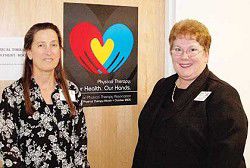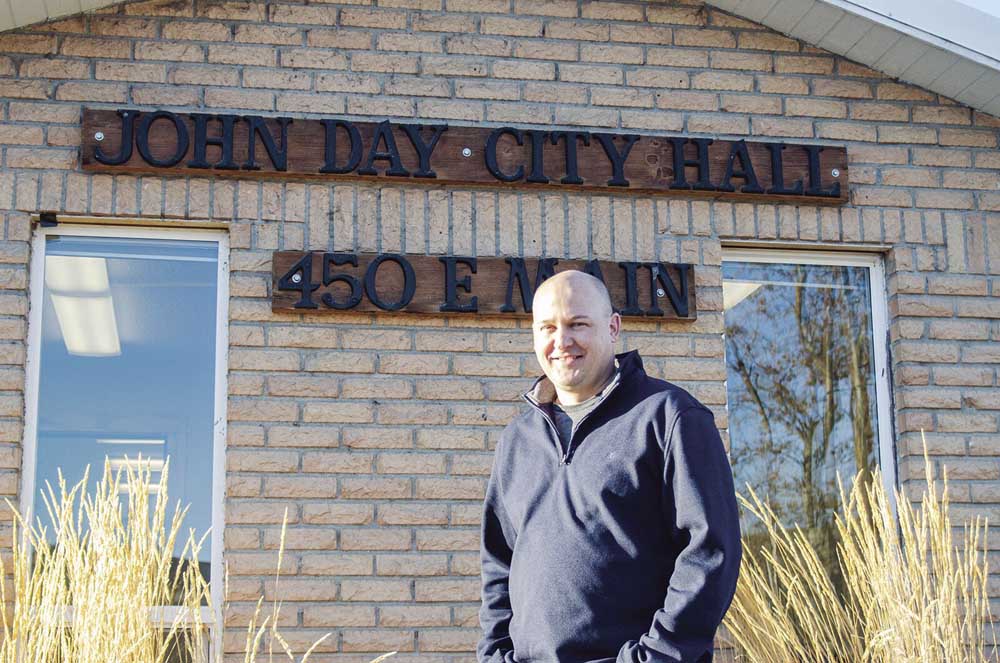Living with diabetes
Published 4:00 pm Tuesday, February 12, 2008

- <I>The Eagle/Angel Carpenter</I><BR>Sarah Russ, PT (left), director of the Blue Mountain Hospital physical therapy department, stands with clerical coordinator Olivia Cornell. Jan Mead, PT, LAc is also part of the team.
JOHN DAY – The bad news about diabetes is in the numbers: 20.8 million Americans have the disease; another 54 million have pre-diabetes and are heading that direction. On average, people with diabetes have already lived with it for seven years before their diagnosis, putting their health at greater risk.
But there is also good news.
It’s easy to be tested for diabetes and a healthy lifestyle can help prevent diabetes and can help a person with diabetes avoid complications from the disease – it can be managed.
Since 2005, physical therapist Sarah Russ has taught a diabetes education course at Blue Mountain Hospital. Russ just wrapped up her winter class, but the course is also offered in the spring and fall. The class is for anyone who wants to learn more about diabetes and is held once a week for five weeks in the hospital’s conference room.
“My role is not to direct anyone’s behavior or choices, but to provide information,” Russ said. “People are then in a position to make informed choices about how to address their condition.”
Registered dietitian Kim Jacobs also leads one of the classes in each series to help class members with meal planning using the diabetic guidelines.
“No foods are forbidden to a person with diabetes, but it’s important to know the recommended amount of certain foods within one’s food plan,” Russ noted.
“The lifestyle recommendations for controlling the high blood sugar levels for people with diabetes are very similar to those for any person: whole foods with emphasis on reasonable portions of nutritious foods, moderate daily exercise, and stress management,” she said.
As a graduate student at California State University, Russ researched the subject for a year and designed a computer software program to train physical therapists and physical therapy students about diabetes.
Knowing about a patient’s history of diabetes is important to a physical therapist because an injury or surgery can elevate a diabetic’s blood sugar levels. A physical therapist also needs to be aware of how exercise provided during a physical therapy treatment can affect blood glucose levels in a patient with diabetes. This information would affect the type of guidance the patient would receive.
Russ, who is on the hospital’s chronic disease committee, saw the need for more resources on the subject and offered to provide diabetes education to the community.
Mary Jane Allen of John Day was diagnosed with diabetes five years ago and recalls taking Russ’ course.
“If you follow her advice, you won’t have any trouble,” Allen said. “But being people, we tend to fall into the old habits.”
Learning about managing her diet to control blood sugar levels was the most helpful thing she learned from the class, including reading product labels for carbohydrate content. She discovered that carbohydrates turn into glucose.
Through the class, she also learned the importance of keeping her triglyceride and cholesterol levels down to keep her heart and blood vessels healthy. Two out of three people with diabetes die from heart disease or stroke.
Stress can increase blood sugar levels, and that’s something Allen said she’s been dealing with lately as she sees her brother suffer from the devastating consequences diabetes can bring when not kept in check.
He lost a leg and he’s on dialysis for five hours a day.
“It breaks my heart and it makes me think, by the grace of God I’m not there, but I could be if I don’t take care of myself,” Allen said.
On the other hand, her aunt, at age 80, has had diabetes for 40 years.
“She’s been terrific,” she said. “You can live with it. You just have to do what you need to do.”
Allen’s working on getting her blood sugar back to reasonable levels. “I’ve never had the high numbers,” she said, “so I’m walking on the treadmill and drinking more water and trying to watch what I eat.”




